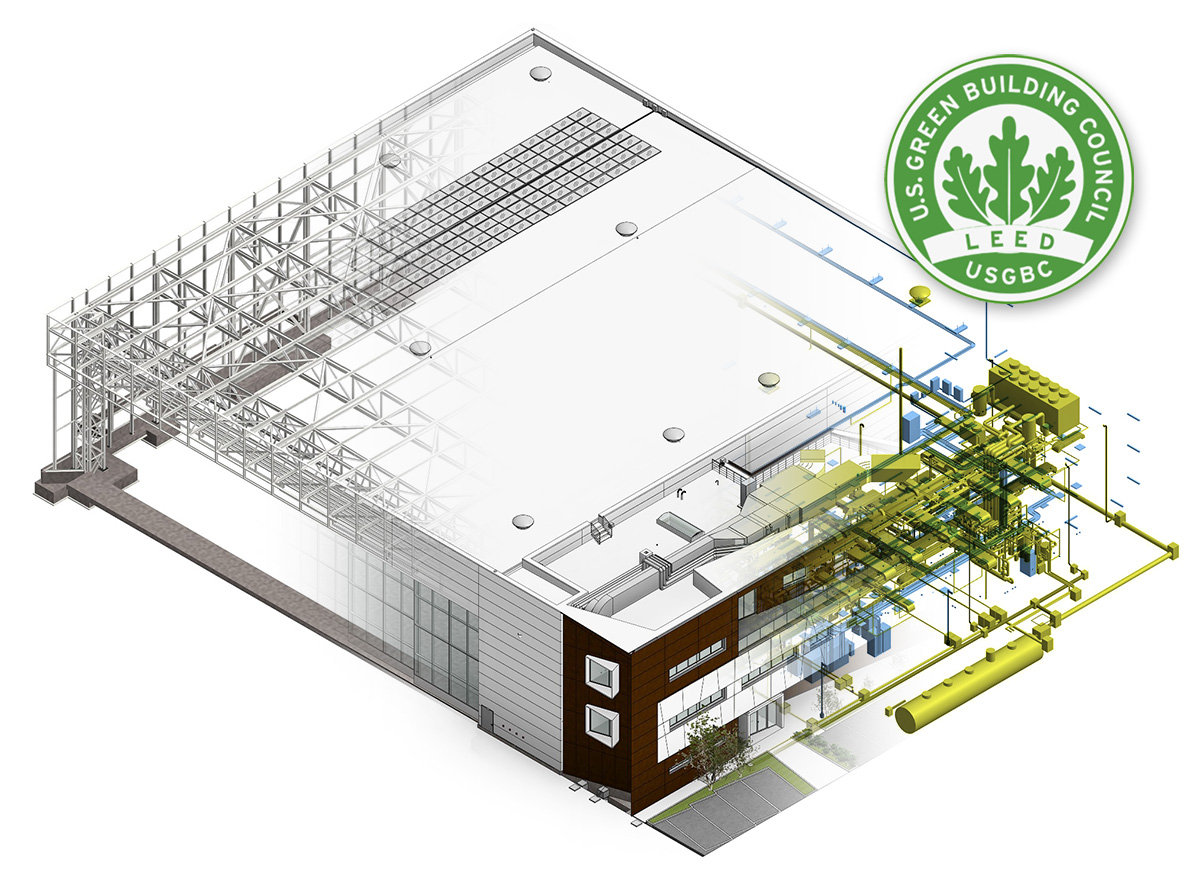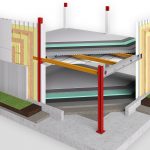In pursuit of the company’s vision towards a more sustainable and green future, Incide Engineering has started internal training towards the principles of design solutions that make buildings have a lower environmental impact.
In particular, Technical Office Coordinator Francesco Boldrini participated in a course organised by ICMQ to qualify as a LEED Associate. He obtained the LEED Associate certification, and was thus able to develop projects towards increasingly sustainable solutions.
What’s LEED Certification?
‘LEED‘ stands for Leadership in Energy and Environmental Design: it is a state-of-the-art system for the certification of high-performance, sustainable buildings.
‘Green Building‘ is the practice of creating structures and using processes that are environmentally responsible and resource efficient throughout a building’s life cycle.
That lifecycle respectfully analyses and integrates the site of operation through design, construction, operation, maintenance until eventual decommissioning.
It is important to reflect on the fact that buildings are responsible for:
- 72% of electricity consumption;
- 39% of energy consumption;
- 38% of all carbon dioxide (CO2) emissions;
- 40% of raw materials used;
- 30% of waste production;
- 14% of drinking water consumption.
So, let’s look at the advantages of constructing certified buildings and using specialised professionals with LEED certification.
The purpose of LEED
LEED design has several purposes, let us look at them below:
- To define ‘green building’ by establishing a commonly used ‘measurable’ standard;
- Promote integrated and sustainable whole-building design practices;
- Recognise environmental leadership in the building sector;
- Stimulate ecological competition;
- Increase consumer awareness of the benefits of green building;
- Transform the construction market.
Why, then, certify a building with the LEED system?
LEED certification saves money during the life of the building and reduces the environmental impacts of buildings: lower operating costs, increased building value, increased occupant well-being.
The experience of Francesco Boldrini, Technical Office Coordinator
Francesco Boldrini, Incide Engineering’s Technical Office Coordinator, attended the preparation course at the Green Building Council Italia (GBC) Association with the teacher Arch. Alessandro Speccher (LEED AP) and took the exam at the USGBC (United States Green Building Council).
Below is the certification obtained.
According to Francesco, it was very interesting to deal with sustainability issues for buildings, delving into topics that are attracting the interest of public opinion at an international level as they have a strong impact on the environment.
Through LEED, wide-ranging results are sought, such as:
- Making a contribution to reversing the process of global climate change;
- Improving human health and individual well-being;
- Protect and restore water resources;
- Protect, enhance and restore biodiversity and ecosystem services;
- Promote sustainable and regenerative cycles of material resources;
- Building a greener economy;
- Improving social equity, environmental justice and community quality of life.
It emerged in the preparation for the exam how important multidisciplinarity is, an aspect that has always interested him in building design since his university years.
Hangar P109 at Ciampino: towards LEED Gold certification
The design of the new Hangar P109 di Ciampino, developed for Aeroporti di Roma, will be the first project to be LEED Gold certified.
The hangar design was, in fact, supported by structural and energy calculations and the design is aimed at LEED certification.
The assignment for ADR’s new Hangar saw the development and completeness of the activities, from the feasibility study to the preliminary and executive BIM design integrated and coordinated between 4 disciplines: civil, structures, architectural and MEP.
The completeness of the assignment, for all disciplines and for the various stages of progress (feasibility study, preliminary design, executive design), allowed the team to develop a strong overall link between the various skills and the software, mostly BIM, associated with them.
Incide Engineering is proud to continue on the path towards sustainability: for this reason, the company’s next goals are training for the transition to a LEED AP competence and the company’s participation in the LEED Council.
Contact Incide Engineering to get more information or tell about your project:











